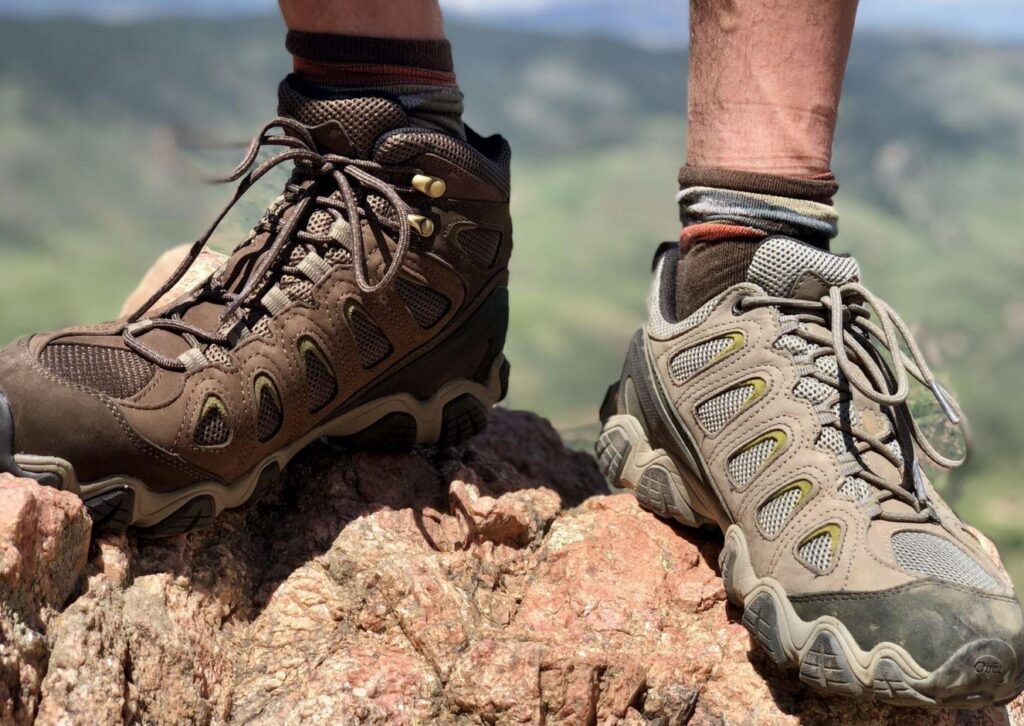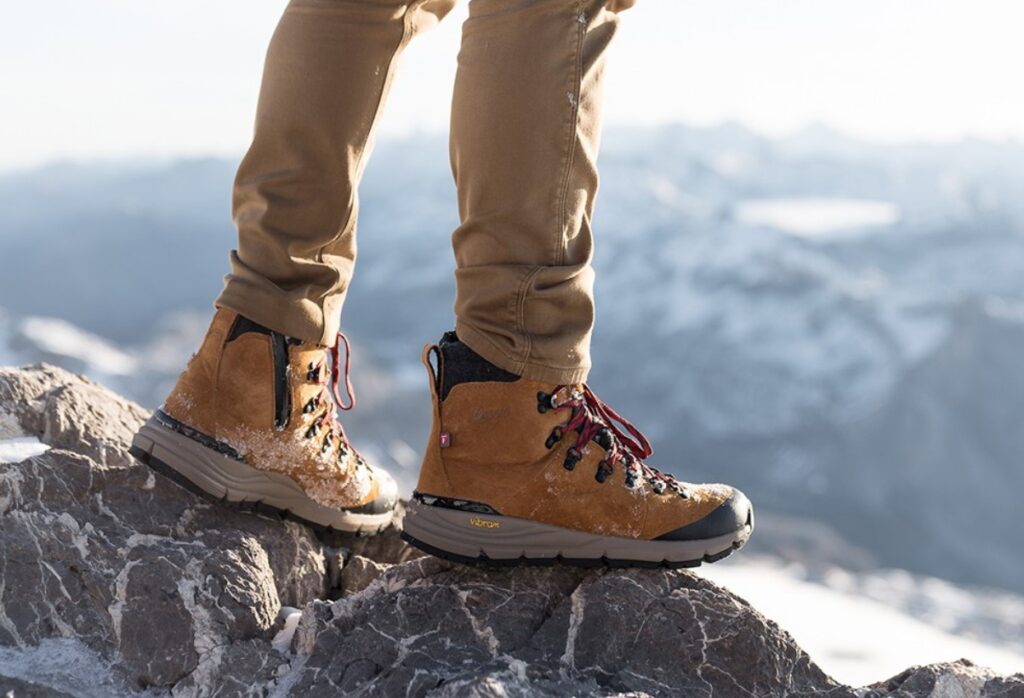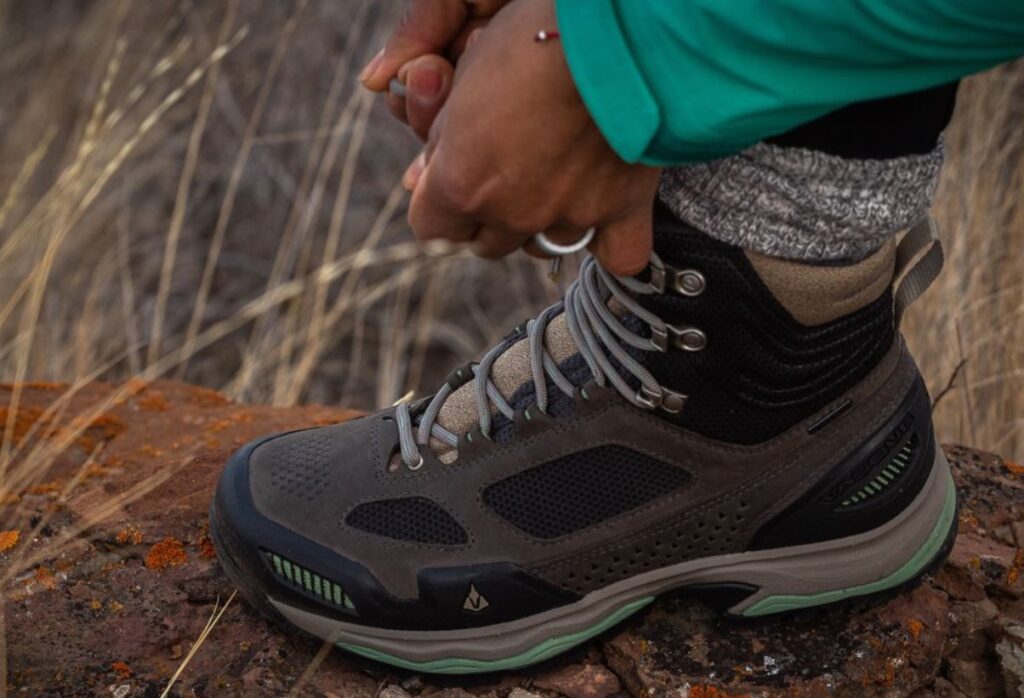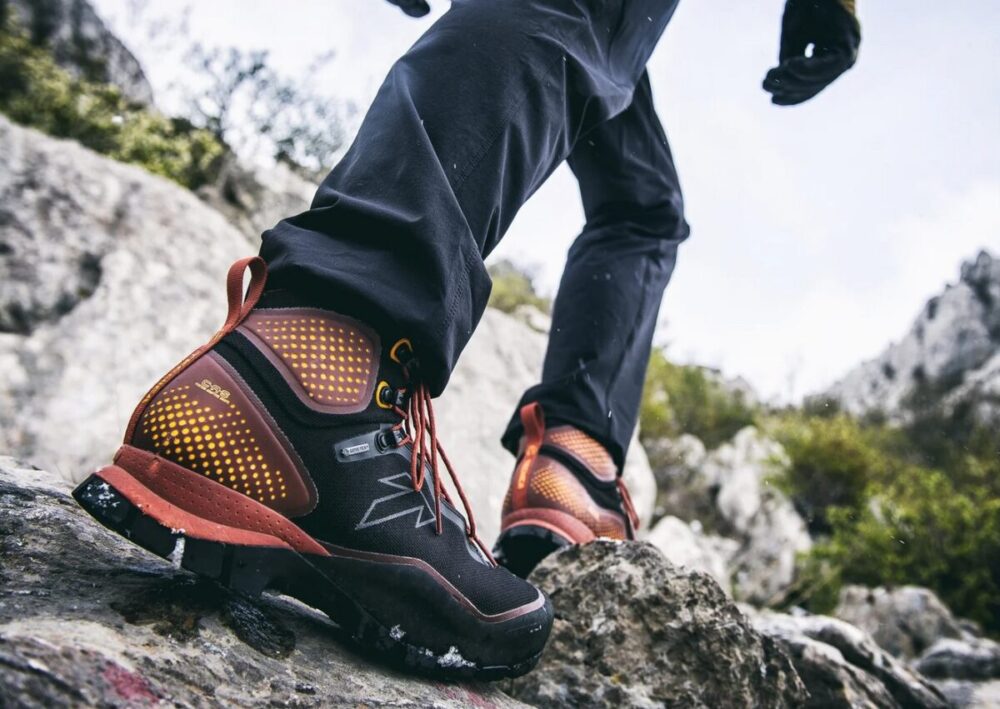Hiking shoes, trail runners, waterproof hybrids and hiking boots are the options when it comes to footwear, depending on the types of hikes one takes, as well as the desired durability and their specific characteristics. However, the last ones offer much more than any of above mentioned footwear. Even though they can be heavy, they are more durable and offer better foot support They have wide, thick soles that will provide stability and improve the overall statics of the hiker’s posture and walk. Have in mind that when going on hikes, there is some sort of a load in a backpack, so that can put additional strain on the back and the leg joints – and that must reflect in the choice of the footwear.
Usually, hiking boots are the preferred footwear for more challenging terrain and for low temperatures. Trail runners will be just fine for paved nature trails in the good weather, but the boots would be appropriate for steep, rocky trails, and colder weather.
Of course, if the speed of hiking is of importance, in that case, the hiking boots probably wouldn’t be a good pick as they are a bit on the heavier side.

The key thing is that they must protect the feet (and partially, the calves) from the elements. It goes without say that they should be waterproof, but also breathable. That way, your feet will be protected from the rain and snow, puddles and mud, but it won’t mean that the sweat will get stuck inside them as that would create problems such as bad odor.
They must be very comfortable. Namely, the hiker shouldn’t get any blisters even after extensive wear. That means they have to be the just right size. That task can be a bit difficult, especially when ordering online. One of the best sites to find ideas for hiking boots is DeListProduct. We recommend that you measure both the length and the width your foot and find size charts to get an accurate idea of what would be the right size for you. When trying them on, there should be a thumb’s width of space between the end of the insole and the longest toe (first or second).
A good way you can check this if you pull out the insole and step on it. Also, the width of the foot plays a role in the sizing, as the shoes shouldn’t be too narrow or wide. The best time to measure your feet or to try on shoes is in the evening, when the feet are the largest as they swell from the activities, or the lack of them, and the ingestion of certain foods and drinks (salt, alcohol). It is recommended to wear the exact, or at least a similar pair of socks, that you would normally wear on a hike. Choose synthetic socks, as the cotton ones might give you blisters and take longer to dry. Lace them and try walking with them to get a decent feel of the boots.

Then, address any issues that you may encounter while trying them on; any seams that feel weird, too much space above the foot, random pressure points, toes touching the front of the boot, etc. – these are potential troublemakers since they might cause blisters or instability on your hikes – or disrupt your comfort in any way. After buying them, you will have to break them in before taking them on their first serious hike, so don’t skip this step. Learn the different ways how you can lace them, and find out which is the most appropriate for your – the one that will give you a suitable, snug fit.
Boots offer great grip as they have lug soles and will keep you going on a variety of mountain terrains and weather conditions. They will increase the traction, and the heel break – the distinct pattern at the back end of the sole will lower the chances of slipping.
Also, unlike most of the other type of hiking footwear, the hiking boots have a higher cut, and therefore, must fit snuggly around the ankles, providing additional stability and support. This will help in keeping your ankles safe from twisting and will prevent scratches from the vegetation or bug bites. There are plenty of hiking shoes that are cut bellow the ankle and even though that feels great, as it doesn’t limit the movement, can mean lack of support.

One of the notable features of the boots is that they will keep your feet warm. Trail runners are ideal for warm weather as they will keep your feet cool, but the boots are the only safe choice when it comes to hiking in harsh weather. The multiple layers are meant to retain the heat and neutralize the impact of the elements.
They are the most durable due to the materials that they are made of; typically, some kind of leather, although there are vegan options. The insulation is usually synthetic and will preserve the warmth despite the impact of the elements. The backpacking boots usually have thick and less flexible midsoles with a proper cushioning that is meant to absorb the impact and spare your feet from mechanical stress. In this case, stiff doesn’t mean uncomfortable, but it will provide rest for your feet as they won’t flex over every rock.
Day hiking boots are a more lightweight variant of the backpacking boots. The first offer bigger flexibility and the latter – excellent support. Whatever kind you will choose depends on the type of hikes you go on. You can wear the day hiking boots on shorter trips, while the backpacking boots can be worn even for off-trail hikes.

In conclusion, although hiking is a fun activity, there are precaution measures you should take, especially when it comes to the choice of footwear. If hiking boots are the appropriate choice (depending on type of hiking trips you go on), you should ensure that they are the propr fit and made out of durable and quality materials, so that they will provide the ideal protection and will aid you in every step that you take.





